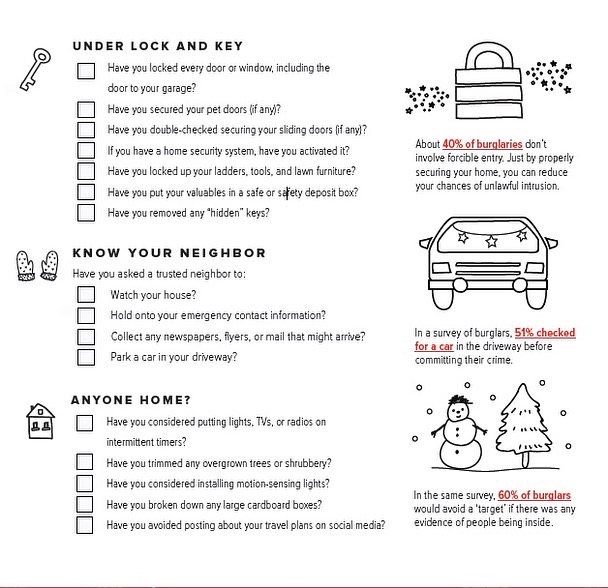At Phillips security solutions we are very proud of our heritage. The biggest part of this is our roots in our community. Our base of operations only being a corner away from our now demolished ancestral home by Kenley aerodrome, as well as living in the Caterham area which we have been a part of for many generations our other side having deep routes in South London such as Norwood, by Norfolk road, Norwood.
The point being we love Croydon, we love Kenley and we also want it kept safe, beautiful and inclusive for the next generation. As such we will be blogging more safety tips and help for the christmas period.
That said don’t hesitate to get your free security assessment at!! Also contact us now for excellent deals on Alarm installation.
www.phillipssecuritysolutions.co.uk
These principles can assist you in reducing the opportunity for crime to occur at your home, your place of work or your business.; They can be considered for development and implementation by individuals, communities, partners or businesses and act as a check-list to see what steps you may be able to take for your own particular circumstances. It’s not a case of having to use all of the 10 Principles at once, you may find using just one of them could help you or it may be a combination of several of them.
When you are looking at using the principles of crime prevention to improve security around your home or business, the best way to approach it is to look at your home or premises as if you were the offender Identify the weak spots, vulnerable areas and concealment points and prioritise the areas for improvement. Contact our Crime Prevention Experts before you undertake any improvements and they will work with you to ensure that you are taking the best approach possible for your respective circumstances.
The 10 Principles of Crime Prevention are:

1. Target Hardening
- Making your property harder for an offender to access.
- Upgrading the locks on your doors, windows, sheds and outbuildings
- Fitting sash jammers to vulnerable doors and windows
- Using secure passwords to prevent criminals hacking your online accounts

2. Target Removal
- Ensuring that a potential target is out of view.
- Not leaving items on view through your windows – i.e. laptops, phones, keys, bags
- Putting your vehicle in the garage if you have one and not leaving valuables on display
- Being cautious about what you post online as it may be used to identify or locate you offline

3. Reducing the Means
- Removing items that may help commit an offence
- Not leaving tools and ladders in the garden and clearing up any rubble/bricks
- Keeping wheelie bins out of reach, as they may be a climbing aid or help transport items
- Making sure that bricks and rubble are cleared up

4. Reducing the Payoff
- Reducing the profit the criminal can make from the offence
- Security marking your property
- Marking your property in such a way that others will not want to buy from the thief
- Not buying property you believe or suspect to be stolen

5. Access Control
- Looking at measures that will control access to a location, a person or object.
- Locking your doors and windows to both your house and your vehicle
- Ensuring that fencing, hedges, walls and other boundary treatments are in a good state of repair
- Putting a security system in place at a commercial site (entry barriers, security guards, ID cards)

6. Surveillance
- Improving surveillance around homes, businesses or public places to deter criminals.
- Removing high hedges / fences at the front of your home that allows an offender to work unseen
- Consider adding CCTV to a commercial site or public place
- Establishing a Neighbourhood Watch Scheme in your street

7. Environmental Change
- Ensuring your property and wider community looks cared for.
- Ensuring that graffiti and domestic/commercial waste is cleared up
- Reporting issues with fly-tipping or broken street lights to the relevant authority
- Working with the police and local authority to close a footpath

8. Rule Setting
- Changing our habits by setting rules and positioning signage in appropriate locations.
- Introducing a rule that the last person entering / leaving should lock the door and remove the keys
- Informing visitors to commercial sites that they must report to reception on arrival
- Informing users that a particular site is closed between certain times and should not be accessed

9. Increase the Chances of Being Caught
- Increasing the likelihood that an offender will be caught to prevent crime occurring
- Making use of dusk to dawn security lighting is in place and in working order
- Using good quality CCTV and/or alarm systems, especially on commercial sites and public places
- Upgrading security to delay an offender, meaning they have to spend more time to gain access

10. Deflecting Offenders
- Deterring an offender or deflecting their intention.
- Using timer switches to make our homes look occupied if vacant after the hours of darkness
- Running youth diversionary schemes with partner agencies
- Referring offenders to drug rehabilitation programmes
What can we do now tonight?

Make sure you get through our checklist!





